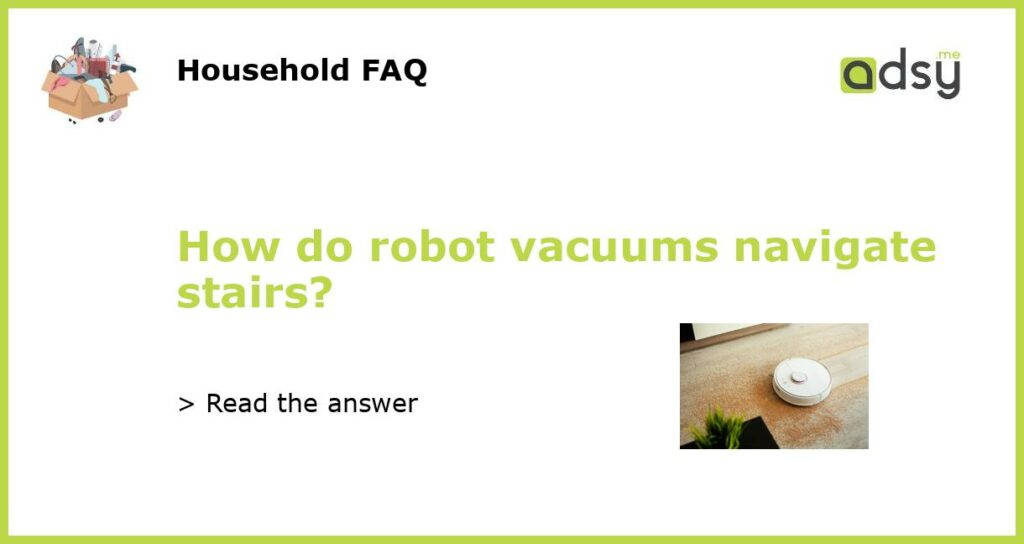How Robot Vacuums Navigate Stairs
Robot vacuums have become a popular choice for keeping homes clean and tidy. These automated devices use various sensors and technologies to navigate and clean your floors efficiently. However, one obstacle that robot vacuums cannot overcome is stairs. Due to the absence of legs or other methods of transportation, robot vacuums are unable to climb or descend stairs like a human or animal. In this article, we will explore the reasons why robot vacuums cannot navigate stairs and discuss alternative solutions for cleaning multi-floor homes.
The Limitations of Robot Vacuum Navigation
Unlike conventional vacuums, robot vacuums rely on sensors and programming to move around and clean your home. They use a combination of infrared sensors, optical sensors, and onboard mapping algorithms to detect obstacles and create a map of your living space. However, these sensors are not equipped to detect or navigate stairs.
Most robot vacuum models are designed to operate primarily on a single level or floor. They navigate by bumping into objects and walls, using sensors to detect the distance between the vacuum and the obstacle. When they encounter stairs or a drop-off, the sensors do not recognize the change in elevation, resulting in the robot vacuum potentially falling down the stairs and causing damage.
Alternative Cleaning Solutions for Multi-Floor Homes
If you live in a multi-floor home and want to use a robot vacuum, there are alternative cleaning solutions available:
Manual Cleaning
One option is to manually vacuum the stairs using a handheld or upright vacuum cleaner. While it may require more effort, manually cleaning the stairs is a safer and more effective method. Additionally, vacuuming the stairs allows you to inspect and clean hard-to-reach corners, ensuring a thorough cleaning.
Stair Cleaning Robots
Although robot vacuums cannot navigate stairs, there are specialized stair cleaning robots available. These devices are designed specifically for cleaning stairs and can be manually operated or attached to a handle for easy maneuverability. Stair cleaning robots often include powerful suction and attachments tailored for effective stair cleaning.
Multi-Robot Solution
If you want to use a robot vacuum on multiple floors, you can consider purchasing multiple robot vacuum cleaners. By assigning one robot vacuum to each floor, you can ensure efficient cleaning without the risk of falls down the stairs. However, this option can be costly and may require additional maintenance and storage space for multiple vacuums.
How to Secure Your Home
To prevent your robot vacuum from accidentally falling down the stairs, it is crucial to establish physical barriers or use virtual walls. Physical barriers can be in the form of baby gates or tape to block off the stairs during the robot vacuum’s cleaning cycle. Virtual walls, available in some robot vacuum models, use infrared signals to create an invisible barrier that the robot vacuum will not cross.
In conclusion, robot vacuums are unable to navigate stairs due to their design and limitations in sensor technology. To clean multiple floors, you can opt for manual cleaning, use specialized stair cleaning robots, or invest in multiple robot vacuums. By securing your home with physical barriers or virtual walls, you can ensure the safety and effectiveness of your robot vacuum’s cleaning process.






